How much do you know about these iconic newspaper covers from the past century?
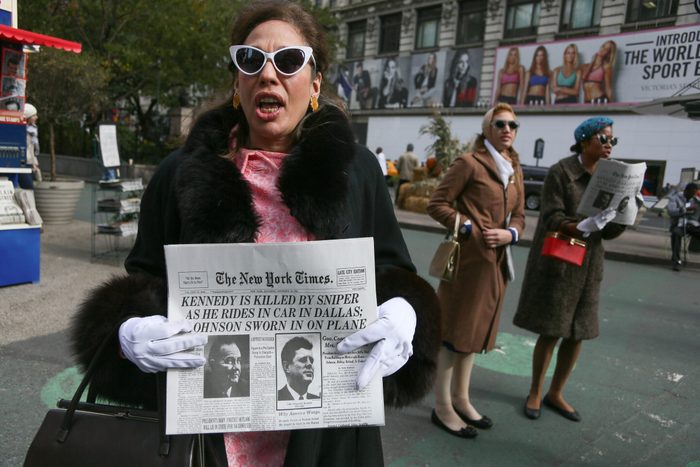
16 Iconic Newspaper Covers That Went Down in History

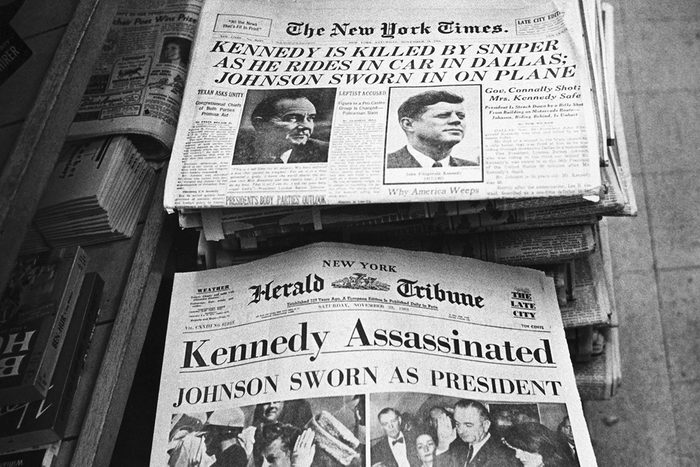
Kennedy Assassinated; Johnson Sworn as President
President John F. Kennedy’s assassination changed the course of American history, and newspaper headlines, including these from the New York Times and New York Herald Tribune on November 22, 1963, delivered the shocking news to the world.
According to Paul Levinson, a professor of communication and media studies at Fordham University in New York City, people already heard the news via TV and radio reports, but the physical newspaper headline brought home this tragedy as not just a bad dream, but all too real and permanent.
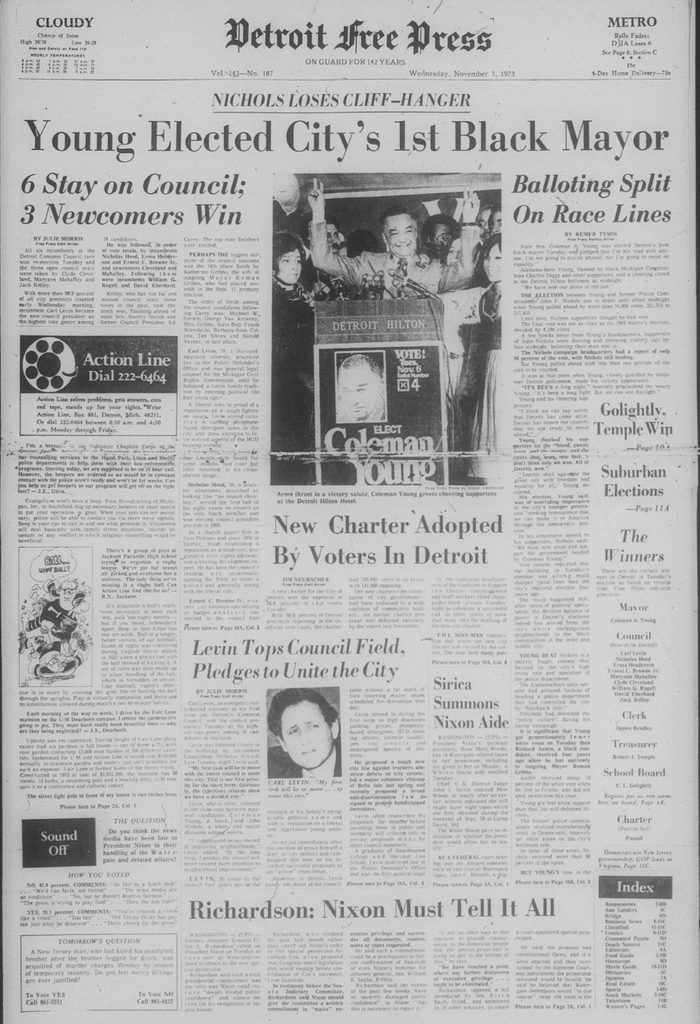
Young Elected City’s 1st Black Mayor
Long before Barack Obama made history as the first Black president of the United States, Coleman Young was making headlines in Detroit when he was elected mayor, as noted by this headline from the Detroit Free Press on November 6, 1973.
According to Michael Stauch, an assistant professor of history at the University of Toledo, Young’s election signaled a turning point in several significant strands of U.S. history, including being an important goal of the Black Freedom Struggle.
“Alongside Coleman Young, African Americans at this time achieved executive office in some of the nation’s largest and most influential cities, including Los Angeles, Atlanta and Newark, as well as in hundreds of smaller cities across the country,” Stauch says.
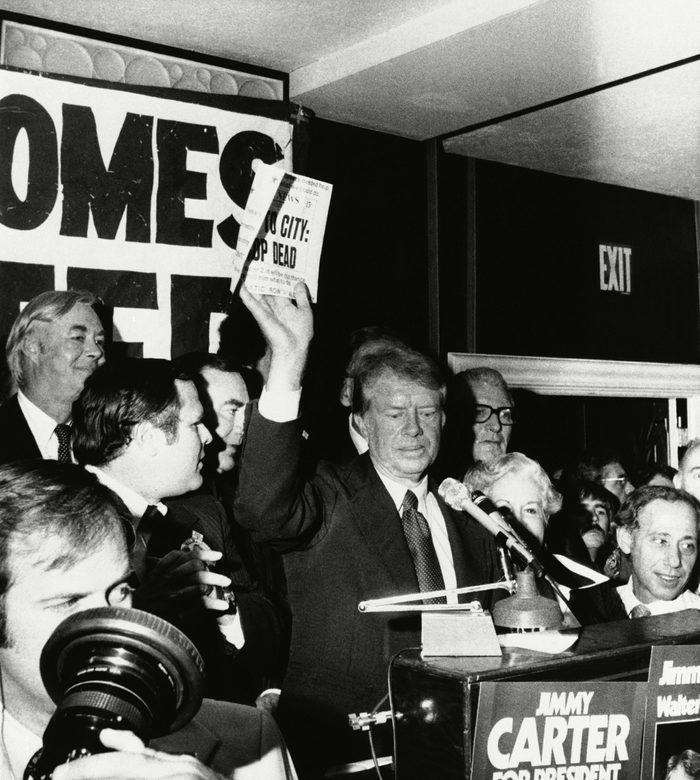
Ford to City: Drop Dead
In a speech on October 29, 1975, President Gerald Ford denied the federal assistance necessary to spare New York from bankruptcy. The following day, the front page of the Daily News read: “FORD TO CITY: DROP DEAD.”
Though he didn’t actually say those words, Ford’s remarks were not particularly well-received. “The story behind this headline was that it was originally supposed to be much stronger, and indeed obscene,” Levinson explains. “But this did the trick, and provides a classic example of how a headline can characterize the news and put a spin on it rather than merely summarize events.”
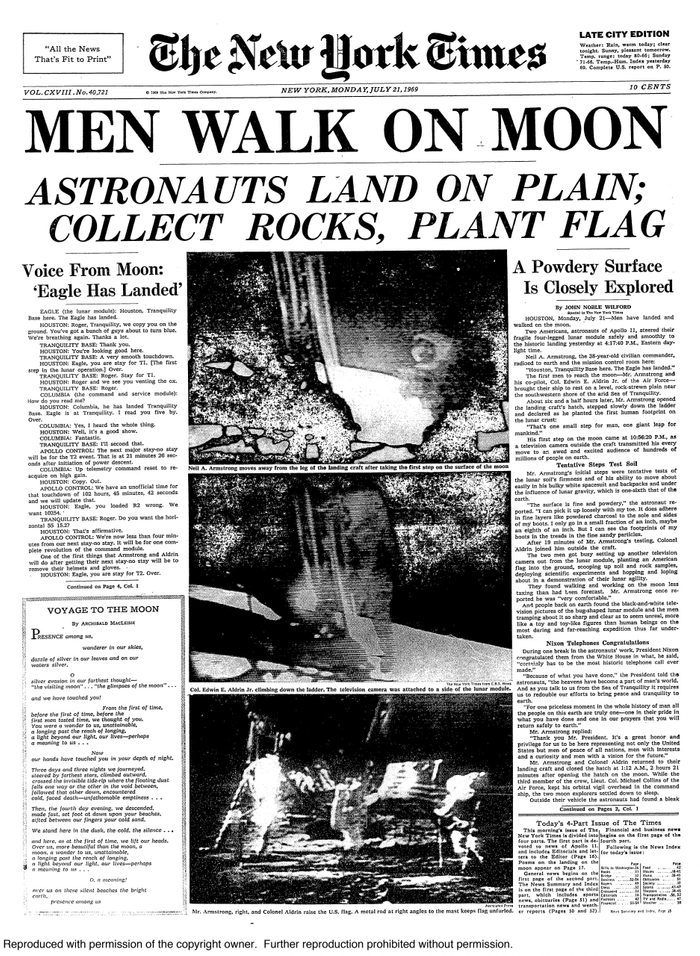
Men Walk on Moon
The original headline for the first edition of the New York Times on July 21, 1969, read “Men Land on Moon” when it went to press at 9.30 p.m. It was then updated at 10:58 p.m. to read “Man Walks on Moon” after Neil Armstrong stepped onto the lunar surface at 10:56 p.m. EDT. (Buzz Aldrin would step out 19 minutes later.)
Finally, when the late city edition went to press at 12:46 a.m., and both astronauts had walked on the moon, the headline was changed again to “Men Walk on Moon.”
“[This] shows how newspapers can reconsider and perfect their headlines for even the most momentous events,” Levinson explains. “Also, in this case, it shows how headlines bring events of cosmic importance literally down to Earth.”
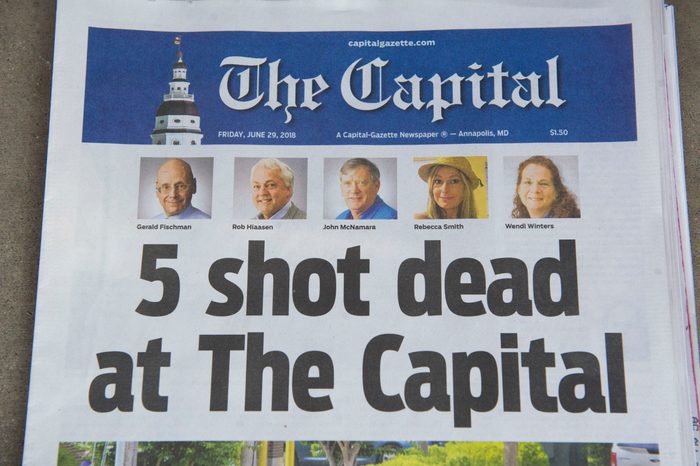
5 Shot Dead at The Capital
Although mass shootings are common in today’s news cycle, one incident from 2018 made for a particularly memorable front page. After an armed gunman stormed into the offices of the Capital newspaper in Annapolis, Maryland, killing five staff members and injuring two others, the surviving members of the news team covered the event in the following day’s newspaper, on June 29, 2018. In fact, even as the shooting was happening, the publication’s crime reporter covered the event while hiding under his desk.
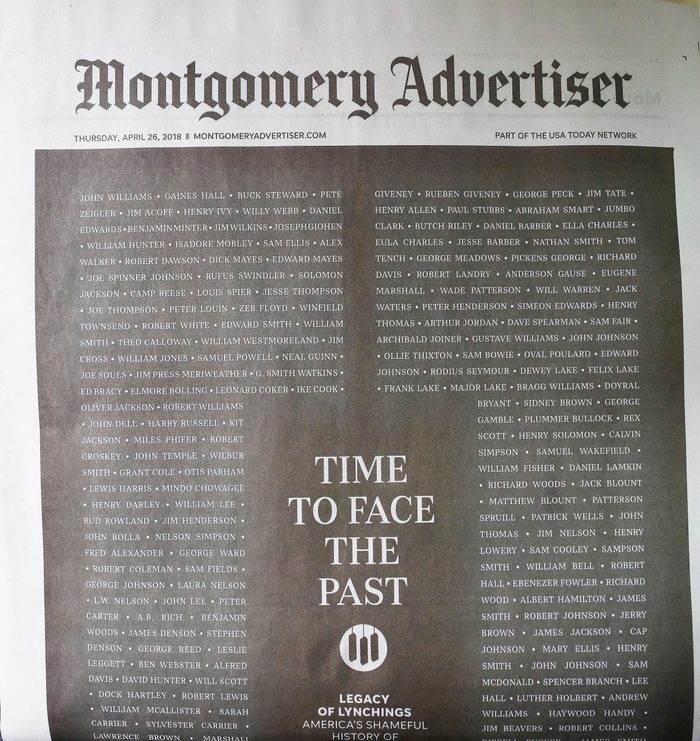
Time to Face the Past
In an unusual move for a newspaper, the Montgomery Advertiser issued a news article and an editorial on April 28, 2018, apologizing for its coverage of the lynchings of African Americans over the past decades.
“We take responsibility for our proliferation of a false narrative regarding the treatment of African Americans in those disgraceful days,” the editorial read. “The Advertiser was careless in how it covered mob violence and the terror foisted upon African Americans from Reconstruction through the 1950s. We dehumanized human beings. Too often we characterized lynching victims as guilty before proven so and often assumed they committed the crime.”
The front page of the newspaper contained not only the powerful editorial, but also the names of some of the victims of the lynchings.
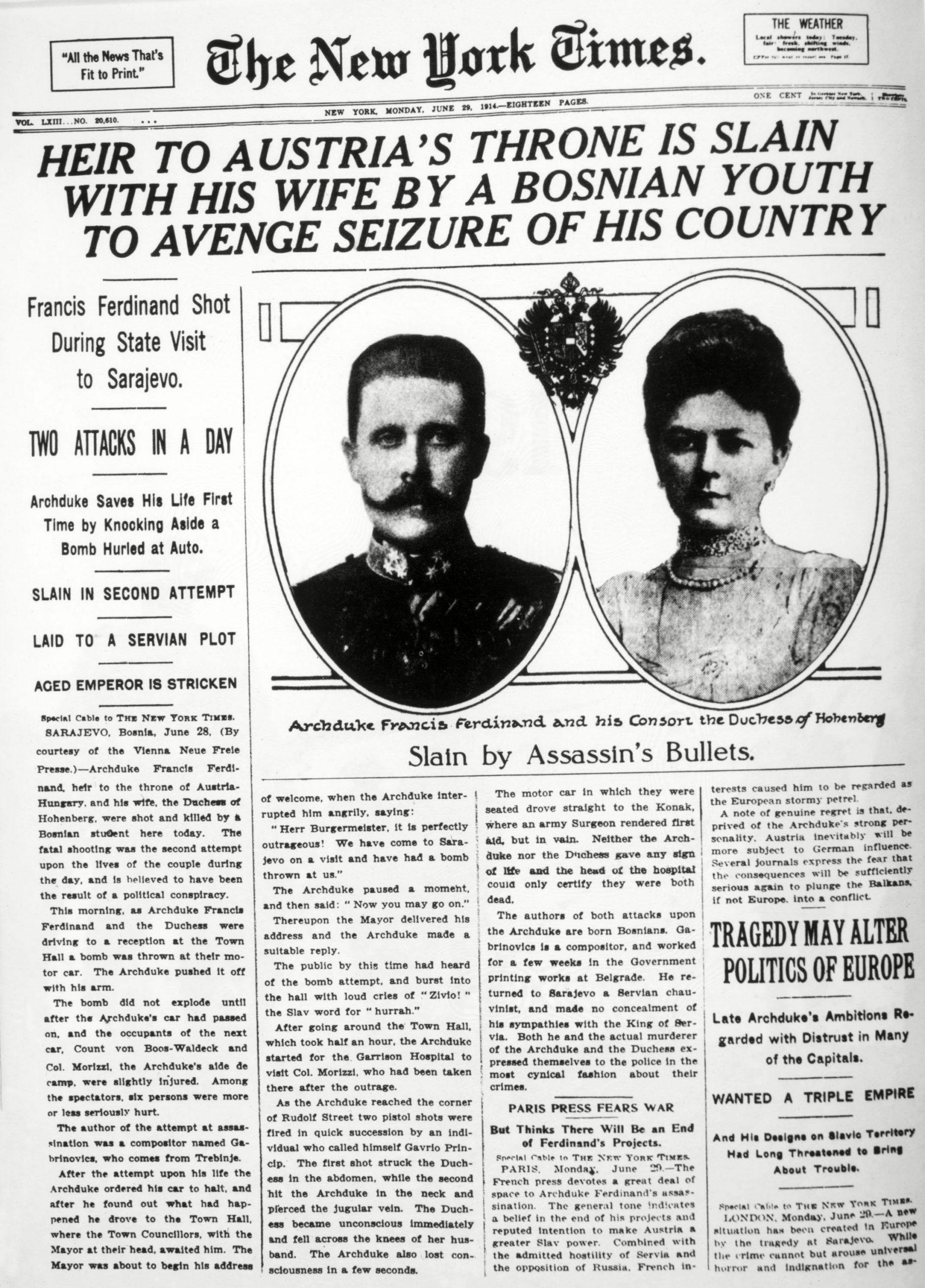
Heir to Austria’s Throne Is Slain With His Wife by a Bosnian Youth to Avenge Seizure of His Country
When this story was initially reported in the New York Times on June 29, 1914, no one could have predicted that it would lead to a war that resulted in approximately 16.5 million civilian and military casualties. When Archduke Franz Ferdinand and Duchess Sophie Chotek were shot in Sarajevo, it ultimately triggered a chain of events that resulted in World War I. This front page conveys the magnitude of this major world event.
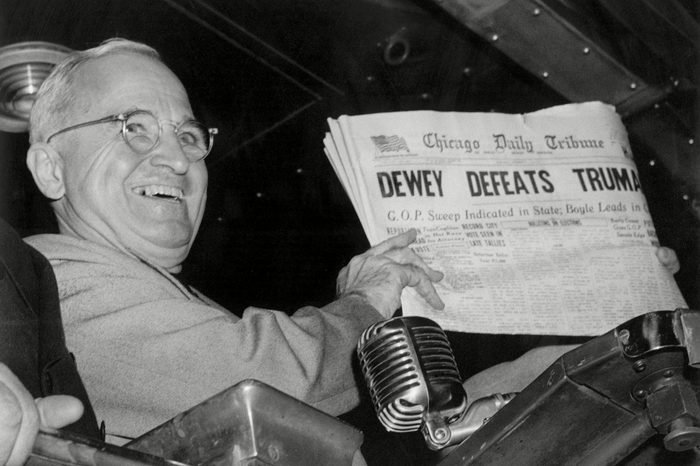
Dewey Defeats Truman
Elections are notoriously unpredictable. And on November 3, 1948, the Chicago Daily Tribune learned that the hard way when it printed a newspaper with the headline “Dewey Defeats Truman” before the election results were official.
Of course, that ended up being completely incorrect: President Harry S. Truman defeated his challenger Thomas Dewey by a margin of 303 to 189 electoral votes. Two days after the election, Truman gleefully posed with the erroneous headline in a now iconic photo.
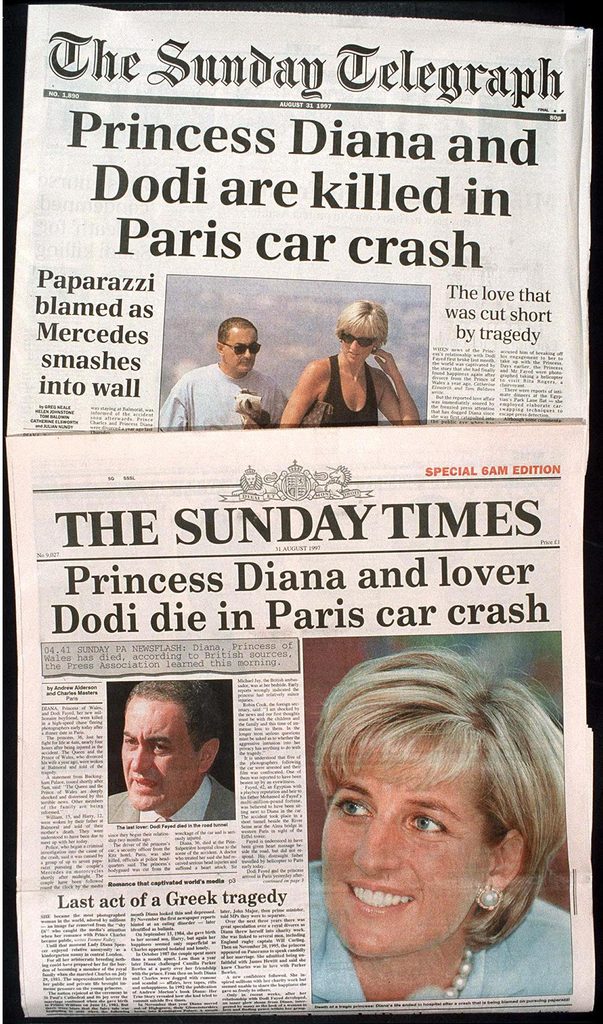
Princess Diana and Lover Dodi Die in Paris Car Crash
The death of a well-known member of the British royal family is always big news, but when it involved the “People’s Princess” being killed suddenly at the age of 36, it was something else entirely.
When Diana, Princess of Wales, and her romantic partner Dodi Fayed got into a fatal car accident in Paris in August 1997, it made headlines around the world. One of the most iconic newspaper covers came from the United Kingdom’s Sunday Times on August 31, 1997.
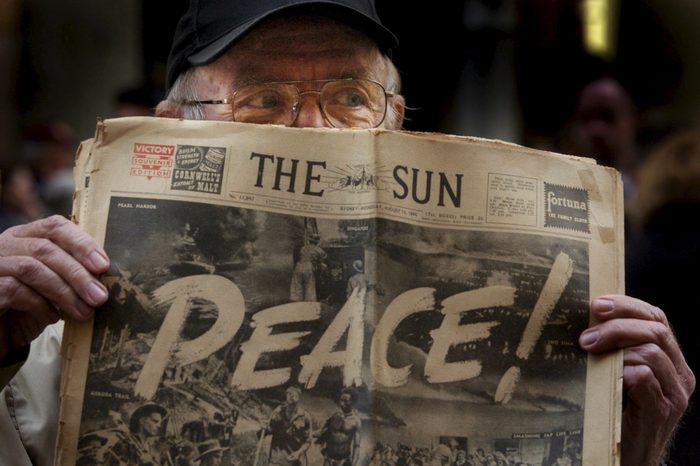
PEACE!
It’s hard to single out one of the jubilant newspaper covers proclaiming the end of World War II, but this one from Sydney’s newspaper the Sun on August 15, 1945, stands out for its giant font and concise headline.
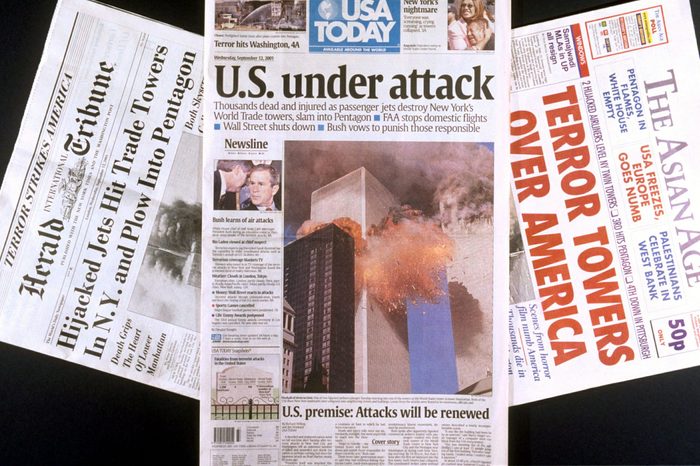
U.S. Under Attack
The events of September 11, 2001, shook the entire world, but the front page of the following day’s USA Today stands out for the amount of information it’s able to convey on one cover. The headline is simple and straightforward, and the bulleted subheadings provide additional, but concise, details.
The two photos included are some of the most iconic from the day: one of the Twin Towers on fire, and the other of President George W. Bush learning about the attacks.
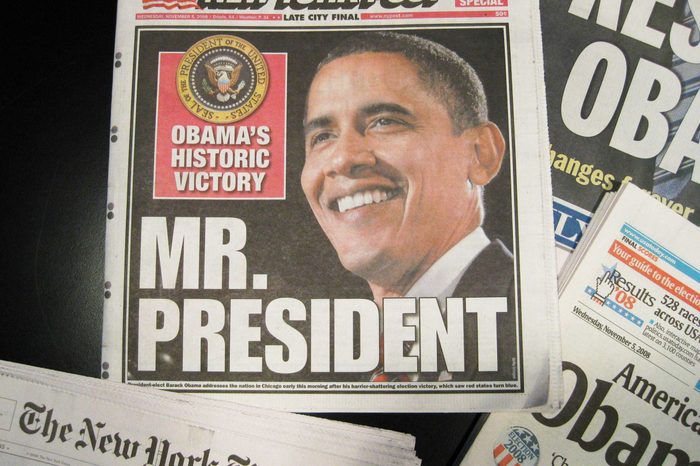
Mr. President
When Barack Obama defeated his Republican challenger, Senator John McCain, in November 2008, and was elected president of the United States, it was historic for several reasons. Not only was he the first Black president, but his campaign demonstrated the importance of engaging young people and using social media.
The morning after the election, on November 5, 2008, the New York Post opted for a large photo of Obama’s smiling face with the simple headline “Mr. President,” which remains one of the most iconic newspaper covers of the 21st century.
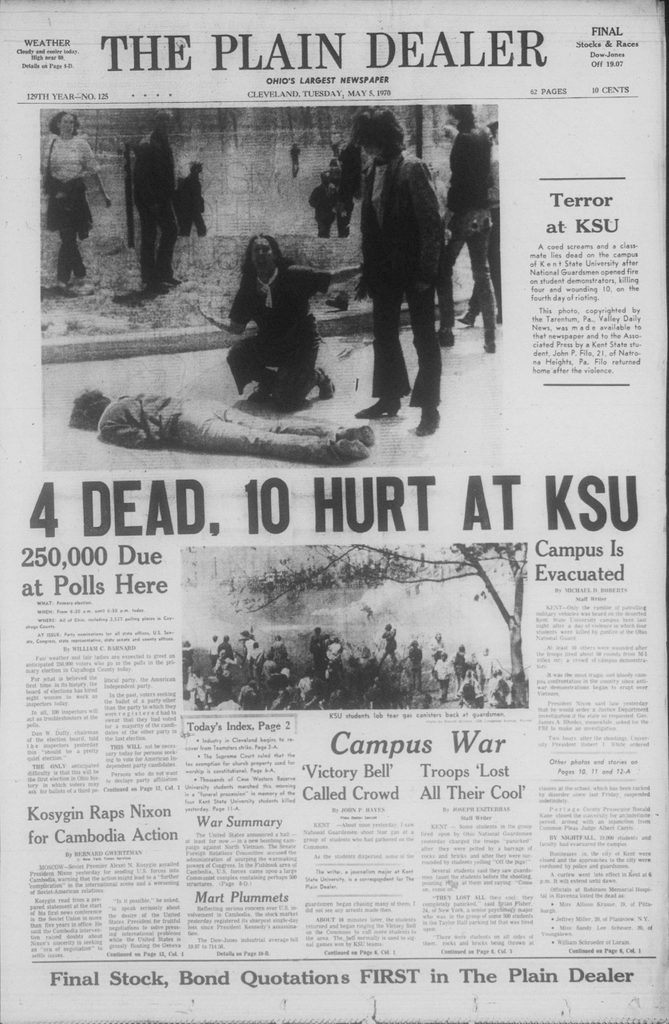
4 Dead, 10 Hurt at KSU
In the spring of 1970, a group of students at Kent State University—located just south of Cleveland, Ohio—were demonstrating against the Vietnam War when members of the Ohio National Guard fired into the crowd, killing four students and injuring several more.
This event set into motion a nationwide student strike at other universities. The cover of the next day’s Cleveland Plain Dealer provided a glimpse into the terror on campus that day, showing 14-year-old Mary Ann Vecchio screaming next to a body on the ground.
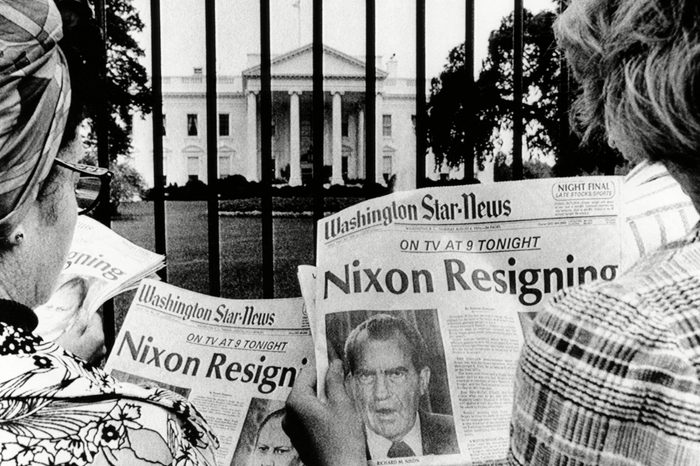
Nixon Resigning
More than 50 years ago, on August 8, 1974, President Richard Nixon gave a televised evening address during which he resigned from office. Following the Watergate scandal, Nixon likely faced impeachment and made the decision to step down himself before that occurred.
Newspaper headlines, including this one from the Washington Star-News, not only broke the news of the upcoming resignation, but also alerted people to the time of the televised address.
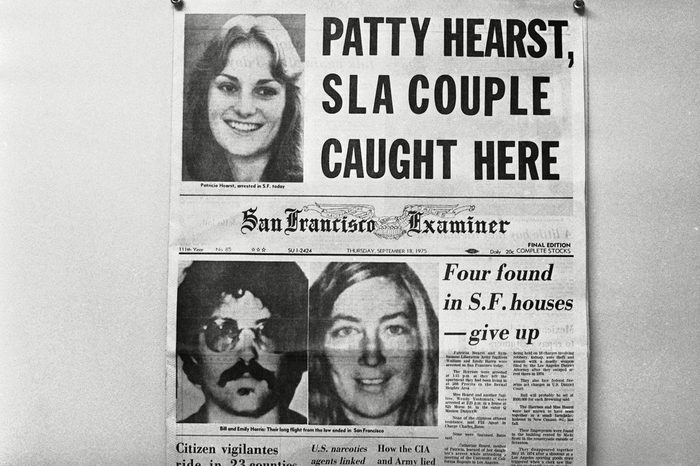
Patty Hearst, SLA Couple Caught Here
When newspaper heiress Patty Hearst, granddaughter of American publishing magnate William Randolph Hearst, was kidnapped in 1974 by the Symbionese Liberation Army, a left-wing terrorist group, it was major news. But things got even stranger when, after a few weeks with the revolutionary cell, Hearst started sympathizing with the group and joined forces with them, in perhaps the most well-known case of Stockholm Syndrome.
In September 1975, Hearst was taken into custody by the FBI for crimes she committed as part of the group, including a bank robbery. What makes this front page announcing her capture particularly interesting is the fact that her father, Randolph Hearst, was president of the San Francisco Examiner at the time.
About the experts
|
Why trust us
At Reader’s Digest, we’re committed to producing high-quality content by writers with expertise and experience in their field in consultation with relevant, qualified experts. We rely on reputable primary sources, including government and professional organizations and academic institutions as well as our writers’ personal experiences where appropriate. We verify all facts and data, back them with credible sourcing and revisit them over time to ensure they remain accurate and up to date. Read more about our team, our contributors and our editorial policies.
Sources:
- Paul Levinson, PhD, professor of communication and media studies at Fordham University in New York City
- Michael Stauch, PhD, assistant professor of history at the University of Toledo
- Smithsonian National Museum of American History: “Freedom Struggle”
- New York Times: “Infamous ‘Drop Dead’ Was Never Said by Ford”
- New York Times: “On Hand for Space History, as Superpowers Spar”
- ABC News: “How a Maryland paper covered a mass shooting in its own newsroom”
- Montgomery Adviser: “Our shame: The sins of our past laid bare for all to see”
- Time: “Behind the Picture: ‘Dewey Defeats Truman’ and the Politics of Memory”
- New York Times: “Death of Diana: Times Journalists Recall Night of the Crash”
- New York Times: “Obama Wins Election”
- The Plain Dealer: “4 Dead, 10 Hurt at KSU”
- Pew Research Center: “How the Watergate crisis eroded public support for Richard Nixon”
- CNN: “The Patty Hearst kidnapping? You don’t know the half of it”
- History: “How Many People Died in World War I?”



















